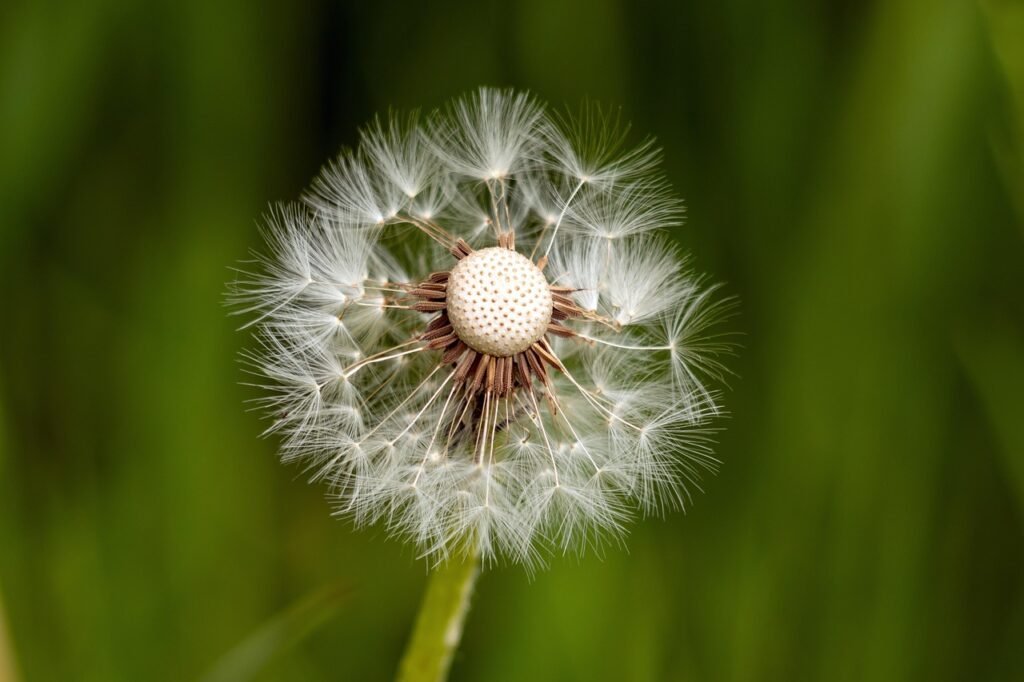Have you ever considered how your mind and body respond to extreme cold? It might seem like a strange combination, but the ideas of mindfulness and cold endurance actually have a fascinating relationship. Let’s uncover how these concepts intertwine and what they can teach you about resilience, self-awareness, and mental strength.

Understanding Mindfulness
Mindfulness is not just a buzzword thrown around in wellness circles. It’s a practice rooted in ancient traditions that focuses on cultivating a present-moment awareness. The idea is to tune in to your thoughts, emotions, and sensations without judgment. This means being fully aware of your experiences, whether they’re pleasant or challenging.
The Origins of Mindfulness
You might find it interesting that mindfulness has its origins in Buddhism and has been adapted by various cultures and practices over centuries. Today, it’s widely used in therapeutic settings to help people manage stress, anxiety, and depression. It encourages you to observe your thoughts and feelings as they arise, creating a space that allows for reflection rather than reaction.
Benefits of Mindfulness
The benefits of practicing mindfulness are extensive. Studies show that consistent mindfulness practice can lead to improvements in mental clarity, emotional regulation, and even physical health. Imagine being able to face tough situations without feeling overwhelmed—this is one of the gifts mindfulness offers.
| Benefit | Description |
|---|---|
| Stress Reduction | Decreasing overall stress levels and anxiety |
| Improved Focus | Enhancing concentration and attention |
| Emotional Regulation | Helping to manage and express emotions better |
| Better Relationships | Fostering empathy and reducing conflict |
Each of these benefits contributes to a more resilient you. By integrating mindfulness into your daily routine, you’re not just promoting a healthier mindset; you’re also equipping yourself to handle discomfort, which brings us to the next point…
The Concept of Cold Endurance
Cold endurance is often considered the ability to withstand and adapt to low temperatures. Think of it as a physical challenge that tests your limits and resilience. cold exposure can come in various forms, from swimming in icy waters to simply enduring a chilly environment for an extended period.
The Science Behind Cold Endurance
Research on cold exposure has revealed some compelling findings. When you expose your body to cold, several physiological responses occur. Your body activates brown fat, which produces heat and helps maintain core temperature. This response can boost your metabolism and improve overall health.
Benefits of Cold Endurance
Engaging in cold endurance practices can provide several benefits that go beyond the physical realm.
| Benefit | Description |
|---|---|
| Enhanced Circulation | Improved blood flow and cardiovascular health |
| Increased Tolerance to Discomfort | Greater mental resilience and physical adaptability |
| Boosted Immune Function | Helped stimulate the immune system |
| Elevated Mood | Increased levels of endorphins, leading to improved mood |
When practiced mindfully, these benefits can enhance your overall well-being and teach you valuable lessons about your limits and capabilities.
The Connection Between Mindfulness and Cold Endurance
Now that you have a sense of what mindfulness and cold endurance are about, let’s unpack their intersection. At first glance, they may seem like two entirely different realms, but both require a significant amount of mental focus and awareness.
Mental Resilience and Awareness
Practicing cold endurance necessitates a strong mental state. The cold can be uncomfortable, and it’s easy to let negative thoughts swirl around your mind. This is where mindfulness plays a crucial role. By remaining present and fully aware of your physical sensations and emotional responses, you can navigate the discomfort more effectively.
Utilizing Breath Control
Breath control is an essential technique in both mindfulness and cold endurance practices. Your breath is a powerful tool—when you focus on it, you can center your mind and regulate your body’s response to cold.
- Mindfulness Breathing Techniques: Common techniques focus on observing your breath, using it as an anchor to bring you back to the present.
- Breathwork for Cold Exposure: Techniques like the Wim Hof Method combine controlled breathing with cold endurance training to enhance mental focus and physical capability.
By training your mind to engage with your breath, you can shift your experience and gain more control over how you respond to cold.
Preparing for Cold Endurance Practice
Before you jump into the icy waters (metaphorically speaking, of course), it’s essential to prepare yourself mentally and physically. Here’s how you can frame your practice for both mindfulness and cold endurance.
Starting Small
If you’re new to cold exposure, begin with smaller bouts of cold exposure. This might mean taking cold showers or stepping outside without a jacket for a short time. The key is to acclimate your body slowly.
Mindful Preparation
Use mindfulness techniques to set yourself up for success. Here are a few strategies:
- Visualization: Before engaging in cold exposure, visualize yourself experiencing the cold without resistance—embracing it fully. This positive imagery can help shift your mindset.
- Setting Intentions: Take a moment to clarify why you want to engage in cold endurance. Whether it’s for personal growth, improved health, or to manage stress, setting clear intentions can help you stay focused.
- Grounding Techniques: Practice grounding techniques like standing firmly on the ground or connecting with your breath to prepare mentally.
Safety First
While it might be tempting to go all in, never underestimate the importance of safety. Always listen to your body and know your limits. Practice in a controlled environment and consider bringing a buddy along for support.

Engaging in Cold Endurance
Now that you’re prepared, let’s detail some approaches to embrace cold endurance mindfully.
Cold Showers
Cold showers are an excellent way to begin your journey. They can be done at home and don’t require special equipment.
- Start Lukewarm: Begin your shower with lukewarm water and gradually reduce the temperature as you get used to it.
- Focus on Your Breath: Pay close attention to your breathing. Breathe deeply and steadily, grounding yourself in the sensations you experience.
- Challenge Yourself: Aim to stay under the cold water for a specific time or until you notice your mind shifting from discomfort to acceptance.
Ice Baths
If you’re ready to level up, ice baths can take your cold endurance practice to another level. This method involves submerging your body in ice-cold water.
- Set Your Mind: Before entering, spend a few minutes practicing mindfulness, focusing on your breath, and preparing for the experience.
- Listen to Your Body: Once you’re in, pay attention to your physical sensations and thoughts. Acknowledge discomfort without judgment and try to stay present in the moment.
- Duration: Start with just a couple of minutes and slowly build up your tolerance.
Outdoor Winter Activities
Taking part in activities like winter hiking or cold water swimming provides a unique immersive experience in nature.
- Prepare Your Mind: Before heading out, have a clear intention about the experience you want to cultivate. Remind yourself of the joys of nature and the invigorating aspects of cold.
- Stay Present: While engaging in these activities, focus on your surroundings—notice the beauty in the frost, the crunch of snow beneath your feet, or the crispness of the air.
- Embrace the Cold: Instead of resisting the cold, view it as a partner in your experience. Each sensation is an opportunity for reflection.
Cultivating Mindfulness in Cold Endurance
As you practice cold endurance, aim to cultivate mindfulness in a way that deepens your self-awareness and promotes growth.
Reflective Journaling
After each cold endurance session, take time to journal about your experience. Reflect on your thoughts, feelings, and any insights you gained. Here are some prompts to help guide your writing:
- What were your initial thoughts when facing the cold?
- How did your body react?
- What emotions came up during the experience?
- How can you relate this experience back to your daily life?
Building a Routine
Consistent practice is crucial for developing both your cold endurance and mindfulness skills. Create a schedule that allows you to engage in these practices regularly. Whether it’s meditating daily or embracing cold exposure weekly, commitment fosters growth.
| Practice | Frequency |
|---|---|
| Mindfulness Meditation | Daily (10-20 minutes) |
| Cold Showers | 2-3 times a week |
| Ice Baths | Weekly, based on your comfort level |

The Psychological Aspects of Enduring Cold
It’s fascinating to consider the psychological modulation that happens during cold exposure. You’ll likely encounter various mental hurdles while adjusting to the cold.
Managing Discomfort
What can be uncomfortable, even painful, is often a choice in how you respond to it. Using mindfulness, you can adjust your perspective on discomfort:
- Acceptance: Allow discomfort to simply be. It’s a signal from your body rather than something to fear.
- Reframing: Change the narrative around the cold. Instead of seeing it as an enemy, view it as a teacher that’s helping you grow.
- Noting Thoughts: When negative thoughts arise during cold exposure, practice noting them and letting them go without engaging too deeply.
Building a Positive Mindset
Learning to appreciate the cold and its challenges can translate into other areas of your life. It’s about creating a mindset that embraces growth rather than shying away from difficulties.
Transitioning Beyond Cold Endurance
Once you’ve cultivated mindfulness and improved your cold endurance, look for ways to apply these skills in your everyday life.
Everyday Mindfulness
Practice mindfulness regularly, whether you’re eating, walking, or having a conversation. By focusing on the moment rather than drifting off into distraction, you deepen your understanding of yourself.
Transcending Challenges
When facing challenges outside of cold endurance, consider the lessons you’ve learned. Your physical and mental training can help you tackle anxiety, work stress, or personal issues with greater ease.

Conclusion: A Harmonious Relationship
Embracing the intersection of mindfulness and cold endurance opens a pathway to profound self-discovery and resilience. Both practices complement each other beautifully, offering you tools for growth when faced with discomfort.
As you journey through these experiences, consider how they enhance your life. With practice, you might find that not only can you endure the cold, but you’re also equipped to face life’s challenges with grace and mindfulness. The cold can teach you resilience; mindfulness can help you navigate that journey. By embracing both, you’re truly investing in your well-being, one chilly plunge at a time.

